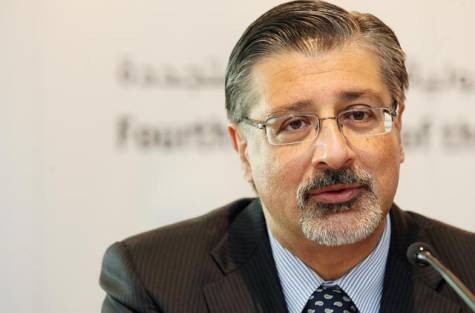Less than 2% of today’s global electricity is generated by solar photovoltaics (PV), but this is set to change. According to an IRENA (International Renewable Energy Agency) report released on Wednesday at InterSolar Europe, this figure could grow to 13% by 2030.

The report titled “Letting in the Light: How Solar Photovoltaics Will Revolutionise the Electricity System” finds the solar industry is poised for massive expansion, driven primarily by cost reductions. It estimates that solar PV capacity could reach between 1,760 and 2,500 gigawatts (GW) by 2030, up from 227 GW today.
“Recent analysis from IRENA finds that cost reductions for solar will continue into the future, with further declines of up to 59% possible in the next ten years. This comprehensive overview of the solar industry finds that these cost reductions, in combination with other enabling factors, can create a dramatic expansion of solar power globally. The renewable energy transition is well underway, with solar playing a central role,” said IRENA Director-General Adnan Z. Amin.
Focusing on technology, economics, applications, infrastructure, policy and impacts, the report gives an overview of the global solar PV industry and its prospects for the future. It includes data and statistics on:
- Capacity: Solar PV is the most widely owned electricity source in the world in terms of number of installations, and its uptake is accelerating. It accounted for 20 per cent of all new power generation capacity in 2015. In the last five years, global installed capacity has grown from 40 GW to 227 GW. By comparison, the entire generation capacity of Africa is 175 GW.
- Costs: Solar PV regularly costs just 5 to 10 US cents per kilowatt-hour (kWh) in Europe, China, India, South Africa and the United States. In 2015, record low prices were set in the United Arab Emirates (5.84 cents/kWh), Peru (4.8 cents/kWh) and Mexico (4.8 cents/kWh). In May 2016, a solar PV auction in Dubai attracted a bid of 3 cents/kWh. These record lows indicate a continued trend and potential for further cost reduction.
- Investment: Solar PV now represents more than half of all investment in the renewable energy sector. In 2015, global investment reached USD 67 billion for rooftop solar PV, USD 92 billion for utility-scale systems, and USD 267 million for off-grid applications.
- Jobs: The solar PV value chain today employs 2.8 million people in manufacturing, installation and maintenance, the largest number of any renewable energy.
- Environment: Solar PV generation has already reduced carbon dioxide (CO2) emissions by up to 300 million tonnes per year. This can increase to up to three gigatonnes of CO2 per year in 2030.
Reaching a 13% share of global electricity by 2030 will require average annual capacity additions to more than double for the next 14 years. The report highlights five recommendations that can help achieve this increase including: updated policies based on the latest innovations; government support of continued research and development activities; creation of a global standards framework; market structure changes; and the adoption of enabling technologies like smart grids and storage.
Letting in the Light is the third solar-focused publication released by IRENA this summer. Last week, IRENA released The Power to Change, which predicts that average costs for electricity generated by solar and wind technologies could decrease by between 26 and 59 per cent by 2025. Earlier this week, IRENA released End-of-Life Management: Solar Photovoltaic, which found that the technical potential of materials recovered from retired solar PV panels could exceed $15 billion by 2050, presenting a compelling business opportunity.
